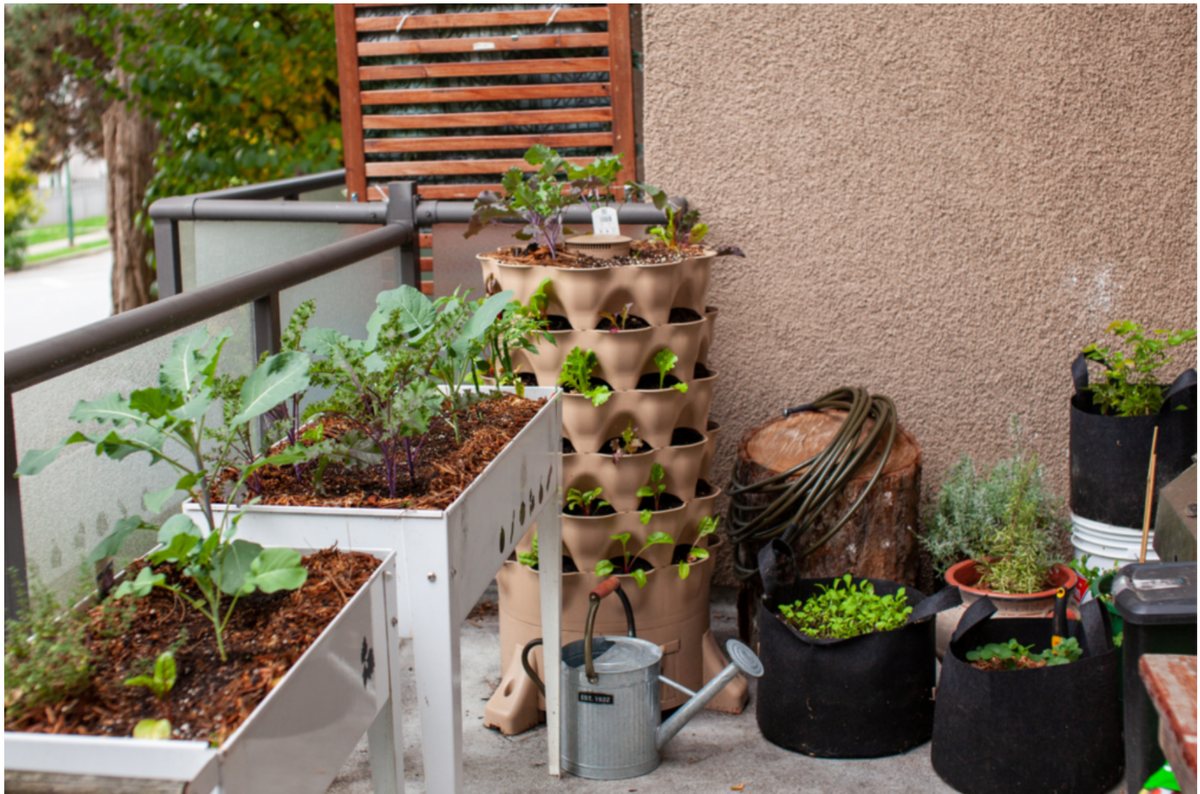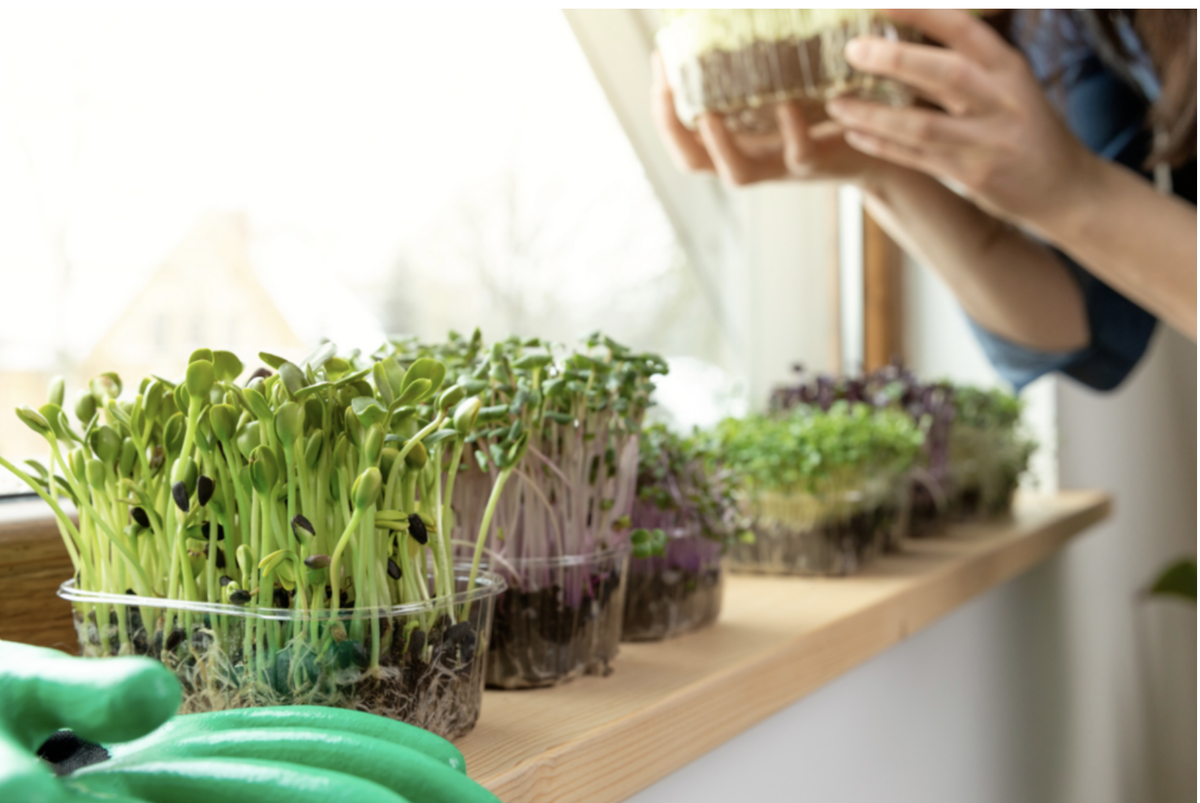Life Hack

How to grow vegetables in small spaces
Growing vegetables at home is more appealing than ever, given the inconsistent supply and rising costs of supermarket greens and concerns about how they’re grown, preserved and packaged.
If you don’t have a garden, however, you might think it’s not possible. But it is!
We’ve looked at some ways you can grow your greens in small courtyards, paved patios, on balconies, and indoors. You can grow your veg at home even if you’re renting or will soon be moving and don’t want to give up your crop.
Growing vertically
If you have a small garden or grassy area you can dig into that gets good sun for much of the year, you’re good to go. Let the limited space help you prioritise what to grow and go for it!
TIP: If buying seedlings in packs of six, swap some with locals so you have a good range of greens, and none go to waste. There are online garden swap groups in some areas that encourage sharing resources and can help with advice.
To maximise growing space, you can also grow vertically. There are vertical planters you can buy (or make), as well as wall baskets and pocket planters that attach to fences and balcony planters that hang from railings.
TIP: There are many free designs online with instructions for making your own vertical planters with recycled materials, such as old wooden pallets.
Vertical planters are ideal if you can’t dig up the yard because you’re renting. Freestanding raised garden beds are another great option. Since they’re elevated on legs, they won’t kill the grass underneath.
Growing in an elevated position often means your plants have better access to sun, getting them up out of the shade of nearby fences and trees. And it makes it harder for slugs and snails to chow down on your goodies before you do. Of course, you’ll still have to watch for flying leaf-munchers, like butterflies and their very hungry caterpillars.
Container crops
Vegetables can be grown in all sorts of containers. Planter boxes and large pots are a great solution for paved and decked areas, bringing lush green life to such spaces.
TIP: Use cheap or recycled plastic storage tubs and pots, buckets, cheap grow bags, empty bags of potting mix or old coffee sacks. Some garden centres and hardware stores have pot recycling programmes.
Containers allow you to follow the sun with your veggies throughout the day and as the seasons change and to shift them to sheltered spots when stormy conditions threaten. They’re also perfect if you’ll be moving house before your greens are ready to harvest because you can take them with you.
Growing locally or indoors
If you don’t have any outdoor space, consider approaching a neighbour to share their garden, or join a community garden if there’s one in your area. Make sure it’s close to home so you can regularly monitor and manage the needs of your crop.
Vegetables can also be grown indoors. Ideally, you’ll have a window that gets good sun throughout the day where you can put your potted crop. For windows that get less sun (say, around three hours’ direct sunlight), choose veggies that enjoy the partial shade, such as lettuces, mesclun and other leafy greens.
If you don’t have a sunny window, you could consider grow lights. Plants need different amounts and different wavelengths (infrared to ultraviolet) of light during various stages of growth, as do different types of plants – for example, fruiting vs leafy greens.
Prices vary widely, from around $12 for a simple full-spectrum LED to $2000+ for large panels of lights that can be adjusted to the needs of what you’re growing. Before buying, it’s worth chatting to an expert to see what you need and how much they’ll cost to run.
Bear in mind that the regular watering your indoor plants will need will increase moisture in your home. So keep your indoor garden to a minimum if you have condensation issues.
Microgreens
While many vegetables can be grown to maturity indoors, microgreens may be the ideal choice for apartments and other tiny homes. They take up minimal space and pack a real punch in terms of nutrition and flavour. They can be grown in small containers and placed on a bright windowsill.
Microgreens are regular vegetables and herbs that are sown close together in bulk and harvested when they have their first leaves and are one to three inches tall – usually in one to three weeks. They often contain higher concentrations of nutrients than their fully grown equivalents.
They’re great in salads, sandwiches and smoothies and as a nutritious garnish. Radish, broccoli, cabbage, kale and mustard all germinate and grow quickly and can be sown and harvested at a similar time. There are many other vegetables available as microgreens, as well as herbs like coriander and basil.
Buy seeds marketed as ‘microgreens.’
The seeds in regular packs are sometimes treated with fungicides and pesticides. These should be harmless in a fully grown vegetable but could be a risk to health if the plant is harvested young. And parts of some vegetables, like potatoes and tomatoes, contain toxins and shouldn’t be eaten as microgreens.
It’s best to buy seeds sold for harvesting as microgreens or let some of your mature vegetables and herbs go to seed so you can use those. But note that the seeds from hybrid plants may not produce the exact same vegetable again, while ‘heirloom’ or ‘open-pollinated seeds should be true to type.
Sprouts
Growing sprouts is another super option for small homes. They’re great for kids as they’re even quicker to grow than microgreens since the germinated seeds are harvested younger – shortly after sprouting. Just like microgreens, sprouts are nutritionally dense.
All you need is your choice of seeds, a clean jar, water, and a fine mesh strainer – cheesecloth is ideal. The process involves soaking, draining and rinsing the seeds daily for a few days. Harvest them when they’re still small and just starting to turn green.
There’s a huge range of seeds suitable for sprouting, including alfalfa, cress, radish, broccoli, kale, rocket, mustard, lentils, mung beans, chickpeas, fennel, chia, and more. Check out online seed catalogues for ideas.





